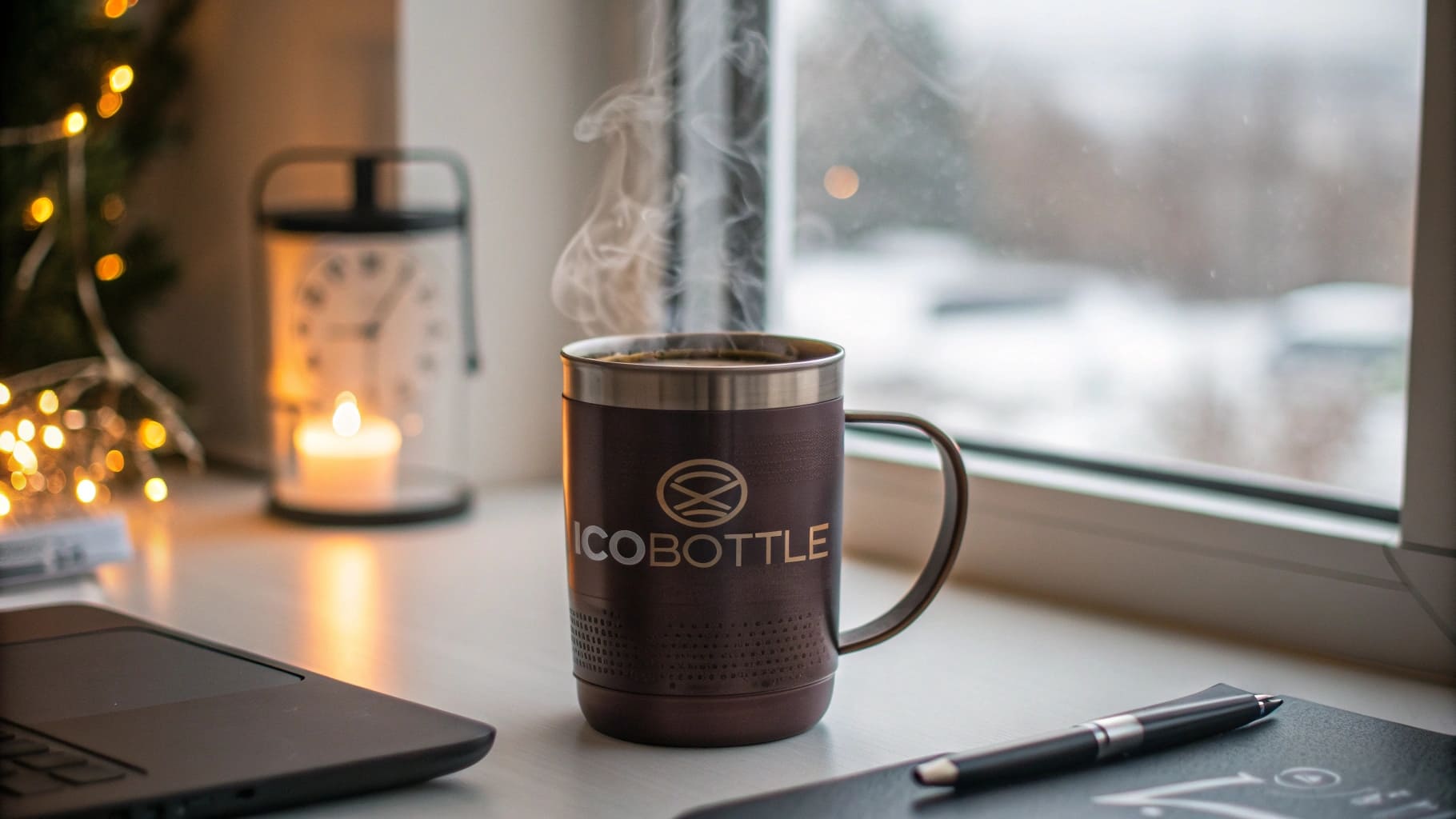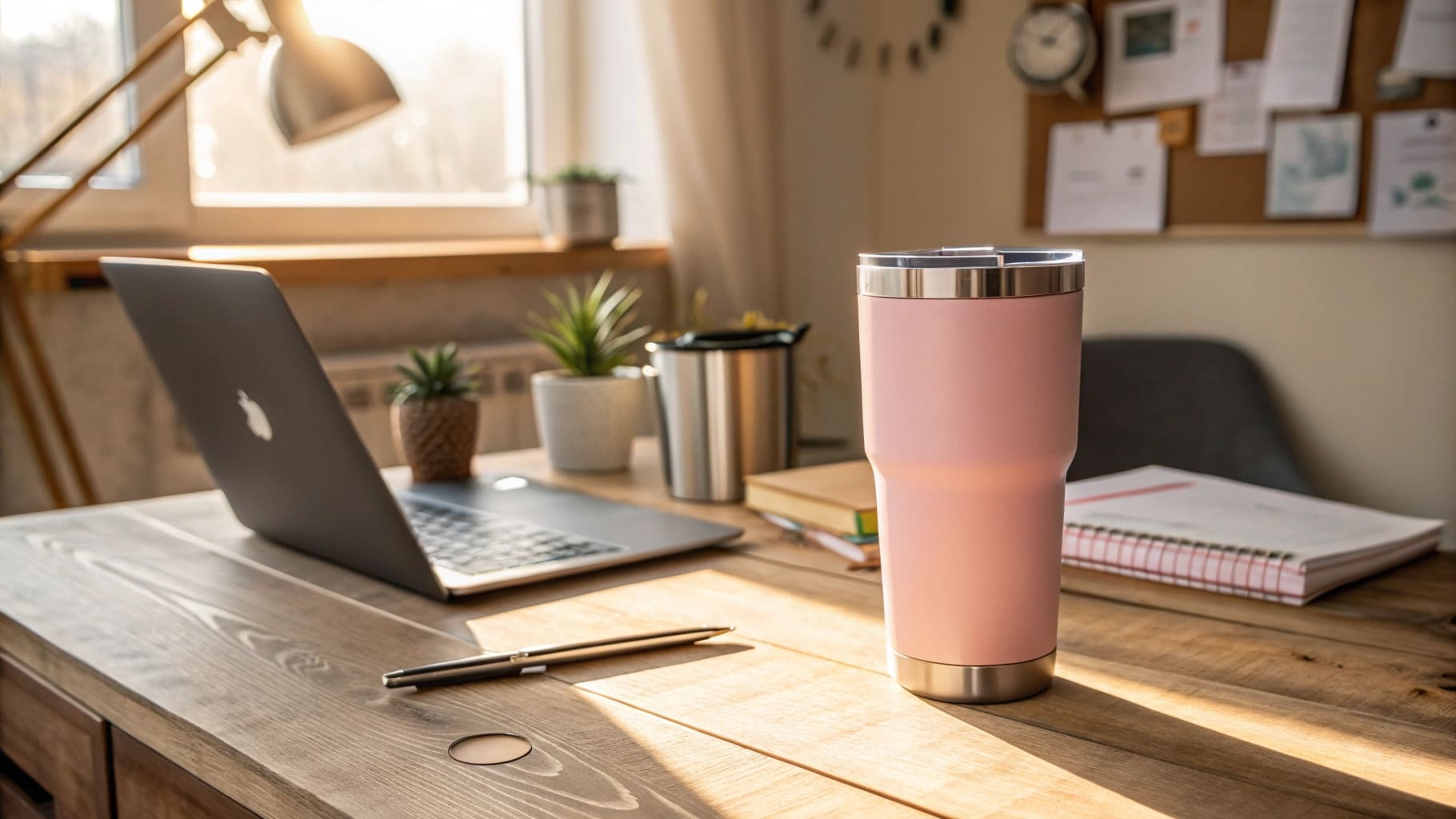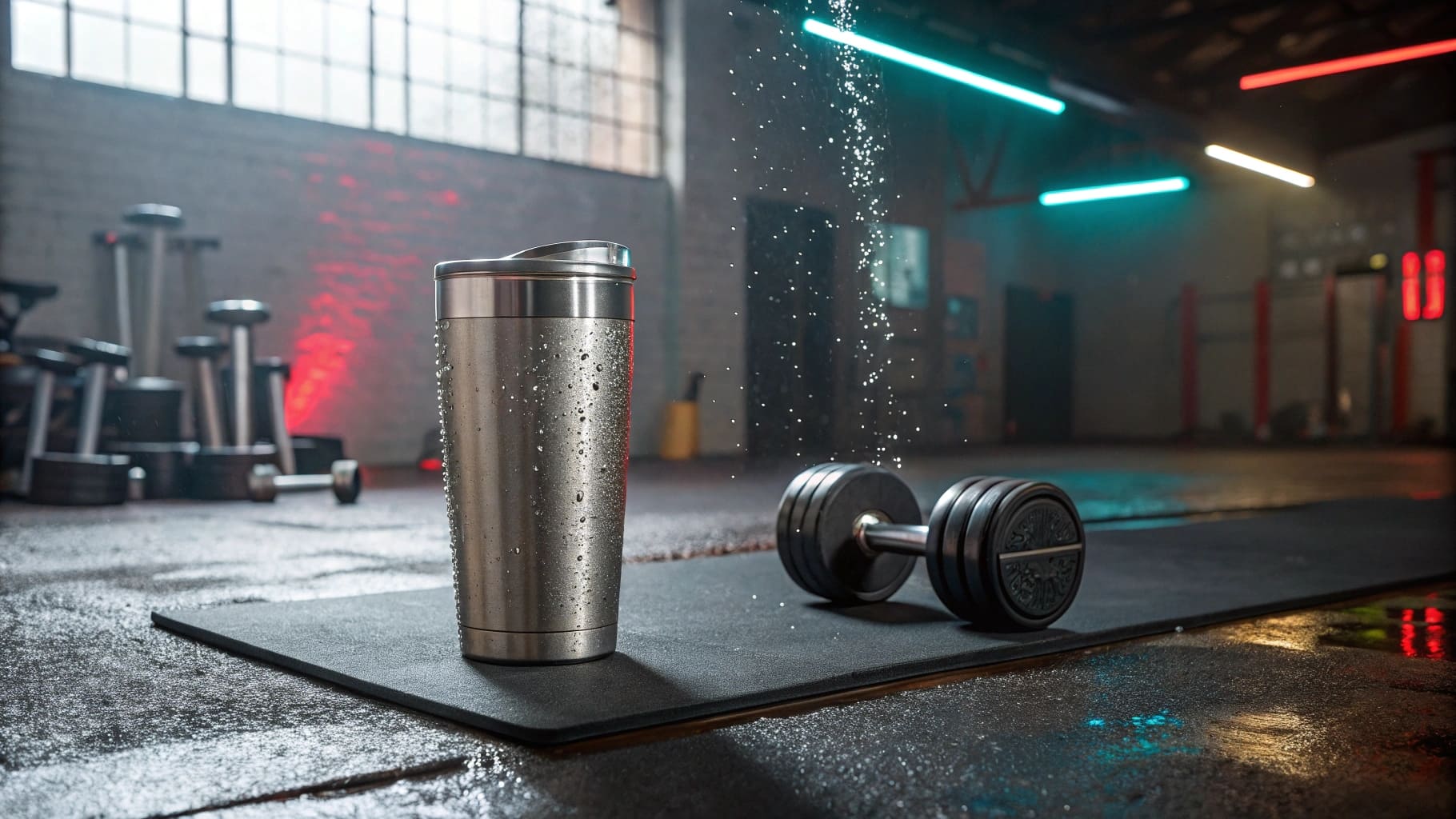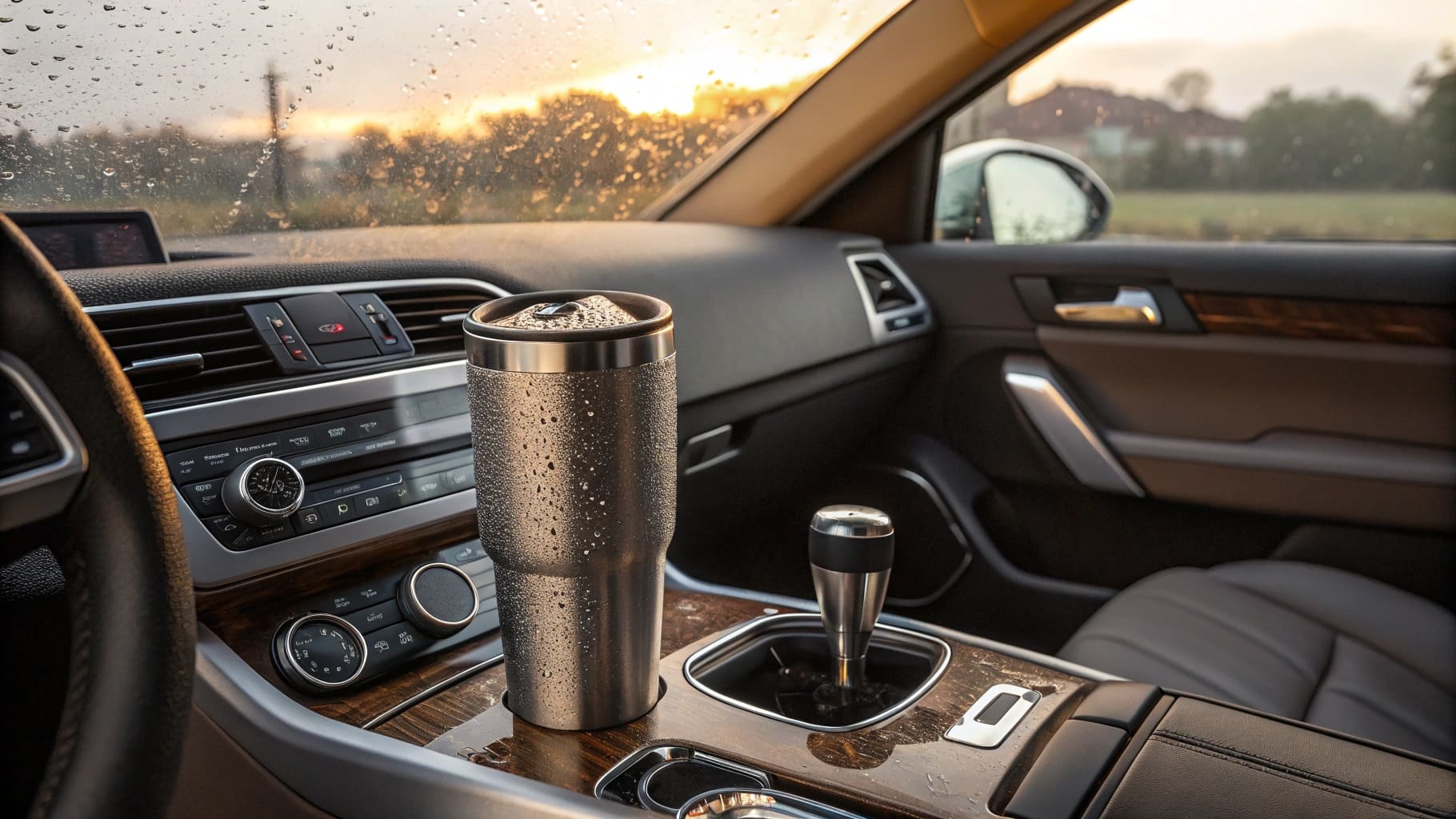Confused by tumbler sizes for your business? Wrong choices hurt sales. This guide clarifies tumbler ounces for smart B2B purchasing decisions.
Tumblers commonly range from 12 oz to 40 oz. The exact capacity is on the product specs. For B2B buyers, understanding these sizes helps match products to customer needs and market demand effectively.

So, you have a basic idea of tumbler sizes. But as a business owner or procurement officer, you know there is more to it than just a number. Let's look at how this knowledge directly impacts your sales and customer happiness. Keep reading to learn more.
How to tell how many ounces a tumbler is?
Unsure how to verify tumbler capacity? Inaccurate specs damage your reputation. Learn simple, reliable ways to confirm tumbler volume for your orders.
Check manufacturer specs first. For physical samples, use a measuring cup and water. This makes sure your product listings are accurate. It also meets your B2B customer expectations.

When you are sourcing tumblers for your business, knowing the exact ounce capacity is very important. I often think about clients like Mark Shenng from Canada. He values quality and needs precise information for his rebranded products. It is not just a small detail. It is about delivering what you promise to your customers.
Checking Manufacturer Specifications
The first place I always look is the product specification sheet from the supplier. This paper should clearly state the volume. It usually shows it in fluid ounces (oz) or milliliters (ml). As a B2B buyer myself, I always ask for this information right away. It forms the basis for my product descriptions. It also ensures I am marketing correctly to my clients in America and Europe. If a supplier is slow to give this or is not clear, that is a warning sign for me. At Icobottle, we make sure our specifications are always clear for products like hip flasks and water bottles.
The Practical Water Test
Sometimes, I get samples from a new supplier. I do not just trust their word. I do a simple water test. I take a normal kitchen measuring cup. I fill the tumbler with water up to where it should be filled (not always to the very top). Then, I pour that water into the measuring cup. This tells me the real volume. It is a small step. But it has saved me from big problems with wrong listings in the past. This is a good practice for anyone in procurement.
Why Accuracy Matters for B2B
For procurement officers and business owners, like Mark who buys stainless steel water bottles, accuracy here is a must. Imagine your customer is a large company. They are doing a promotional giveaway. They order 20 oz tumblers. If they get tumblers that are actually 18 oz, it makes your brand look bad. This careful checking of capacity builds trust. It also makes sure customers are happy. Happy customers mean more business later.
How many ounces are in a tumbler?
Wondering about typical tumbler capacities? Stocking unpopular sizes ties up capital. Discover the common tumbler ounces your customers are actually seeking now.
Tumblers typically range from 12 oz to over 40 oz. Popular sizes like 16 oz, 20 oz, and 30 oz meet different consumer needs. This could be for coffee, daily hydration, or longer use.

I have been in the stainless steel drinkware business for many years. I have seen trends appear and disappear. But when it comes to tumbler sizes, some capacities are always popular with users. This information is very important for B2B buyers like you. If you are a startup boss or a procurement officer, knowing these popular sizes can really help your business.
Popular Tumbler Sizes Breakdown
You can find tumblers in many sizes. But a few sizes are most common in the market. Here is a quick look at what my clients in America and Europe often ask for. This also applies to products like our coffee mugs and tumblers at Icobottle.
| Size (oz) | Common Use | Notes |
|---|---|---|
| 12 oz | Kids, small coffee/tea portions | Compact, easy to hold |
| 16 oz | Standard coffee (like a Grande) | Often fits car cup holders, very popular |
| 20 oz | All-day hydration, good for many uses | Balances size and portability well |
| 24 oz | More hydration, smoothies | Getting more popular |
| 30 oz | Long trips, serious hydration | For those who do not want to refill often |
| 40 oz+ | Max capacity, outdoor trips | Trend towards larger sizes is strong |
Matching Size to Lifestyle
The main thing is to understand the person who will use the tumbler. A 12 oz or 16 oz tumbler might be perfect for a coffee shop to sell with its brand on it. A 20 oz or 24 oz is great for company wellness programs. And those larger 30 oz or 40 oz tumblers? They are good for outdoor brands or companies selling to active people. I always tell my clients to think about their specific target audience. This helps them choose the right sizes for their stock. Mark Shenng, for example, needs to consider what sizes Canadians prefer when he rebrands and distributes.
The Car Cup Holder Consideration
One practical thing I always mention is car cup holder compatibility. This is especially true for sizes up to 20 oz. Many people expect their daily tumbler to fit in their car. Generally, 12 oz and 16 oz tumblers are safe choices. Some 20 oz tumblers with a narrower base also fit well. For larger sizes like 24 oz and up, it is less common. So, it is good to tell customers this or design the tumbler specifically if fitting in a car cup holder is important for your market.
How much liquid does a tumbler glass hold?
Struggling with tumbler volumes for B2B orders? Mismatched inventory means lost sales. Align liquid capacity with your target market's specific needs.
Tumblers hold different amounts, commonly 12oz to 40oz+. For B2B, the important thing is to pick sizes that fit your target customer's lifestyle. This also helps with product variety and branding.

When I talk with B2B buyers, the question of 'how much liquid' quickly changes. It becomes 'which liquid capacities will sell best and show my brand well?' Mark Shenng, who looks for quality and good prices for his Canadian business, would think this way. He needs to make smart choices for the stainless steel water bottles he imports from China or Vietnam.
Understanding Your End-User
The first step I always suggest is to really understand the person who will use the tumbler. Are you selling to busy workers who need a 16 oz coffee tumbler for their drive to work? Or maybe you sell to people who love the outdoors. They might like a 30 oz or 40 oz tumbler for long walks. Knowing this helps you choose sizes that will actually sell. For example, a procurement officer for a big company might choose 20 oz tumblers for employee gifts. This is a size that many people like.
Strategic Product Line Diversification
I have found that offering a good range of sizes can attract more customers. Instead of just one "standard" size, think about offering a small (like 12 oz), a medium (like 20 oz), and a large (like 30 oz) option. This meets different needs and uses. For my clients who export to America and Europe, this strategy helps them reach more customers. It also lets people pick the perfect tumbler for different activities. At Icobottle, we can supply a variety of sizes with top-quality custom logos and colors.
Branding and Customization Opportunities
Remember, the tumbler's size also changes the space available for your custom logo or design. A larger tumbler gives more room for big, noticeable branding. Since Icobottle focuses on high-quality customization, this is an important point we discuss with clients. We need to make sure the chosen size shows off your brand in the best way. This is key for B2B customers who are rebranding products.
Staying Ahead of Market Trends
Finally, I always watch market trends. Right now, more people want larger capacity tumblers. Being sustainable is also very important. This increases sales for all reusable tumblers. Personalization is another big trend. Offering different sizes helps you use these trends to your advantage. Mark Shenng is aware of trends but also faces pain points like communication and shipment delays. Choosing the right, popular sizes can simplify part of his procurement process.
Conclusion
Understanding tumbler ounces helps B2B buyers choose popular sizes. It also helps verify capacity and match products to market needs. This leads to happy customers and business success.

